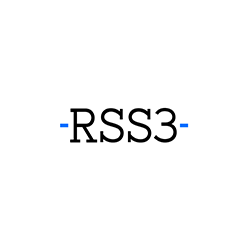What is the Difference Between Layer 1 and Layer 2 Blockchain

Blockchain technology has undoubtedly revolutionized various industries by providing decentralized, secure, and transparent systems for storing and transferring data. Within the blockchain ecosystem, there are different layers that play crucial roles in the network's operations. Two primary layers that are frequently discussed in blockchain technology are layer 1 and layer 2. While both layers are essential components of blockchain networks, they serve distinct purposes and have unique characteristics that set them apart. In this article, we will delve into the differences between layer 1 and layer 2 blockchain and explore their respective functionalities and use cases.
Layer 1 blockchain refers to the underlying main blockchain network, also known as the base layer. It serves as the foundation for the entire blockchain system and is responsible for processing and validating transactions. Examples of layer 1 blockchains include Bitcoin, Ethereum, and other major public blockchains. Layer 1 blockchains operate on a consensus mechanism, such as proof of work (PoW) or proof of stake (PoS), to secure the network and reach agreements on the state of the ledger. These consensus mechanisms are executed directly on the main blockchain, making it the primary layer for transaction settlement and finality.
On the other hand, layer 2 blockchain solutions are built on top of layer 1 blockchain networks to enhance scalability and functionality. Layer 2 solutions aim to alleviate the limitations of layer 1 blockchains, such as slow transaction speeds and high fees, by offloading some of the transaction processing from the main chain to secondary layers. This enables faster and more cost-effective transactions while maintaining the security and decentralization of the main blockchain. Layer 2 solutions can include payment channels, sidechains, state channels, and other protocols that facilitate off-chain computation and transactions.
One of the key differences between layer 1 and layer 2 blockchain is the level at which they operate within the blockchain stack. Layer 1 is the base protocol layer that directly interacts with the main blockchain network, while layer 2 is an overlay protocol that runs on top of layer 1 to provide additional functionalities. Layer 1 blockchain focuses on transaction settlement and security, whereas layer 2 blockchain focuses on scalability and performance optimization. Additionally, layer 1 blockchains are typically public and permissionless, allowing anyone to participate in the network, while layer 2 solutions can vary in their permissioning and privacy features.
Another significant difference between layer 1 and layer 2 blockchain is the governance model and consensus mechanism employed by each layer. Layer 1 blockchains require widespread agreement among network participants to validate transactions and make changes to the protocol, leading to slower decision-making processes. In contrast, layer 2 solutions can implement more efficient consensus mechanisms, such as state channels or federated chains, to achieve faster transaction speeds and reduce overhead costs.
Understanding the variances between layer 1 and layer 2 blockchain is essential for navigating the intricacies of blockchain technology effectively. While layer 1 serves as the foundational backbone of the blockchain network, layer 2 offers innovative solutions to improve scalability and performance. By leveraging the unique strengths of both layers, developers and users can create more efficient and user-friendly blockchain applications that cater to diverse use cases and demands. The evolution of layer 1 and layer 2 blockchain technologies will continue to shape the future of decentralized systems and drive innovation in the blockchain space.
Related articles
Latest articles
See more
























